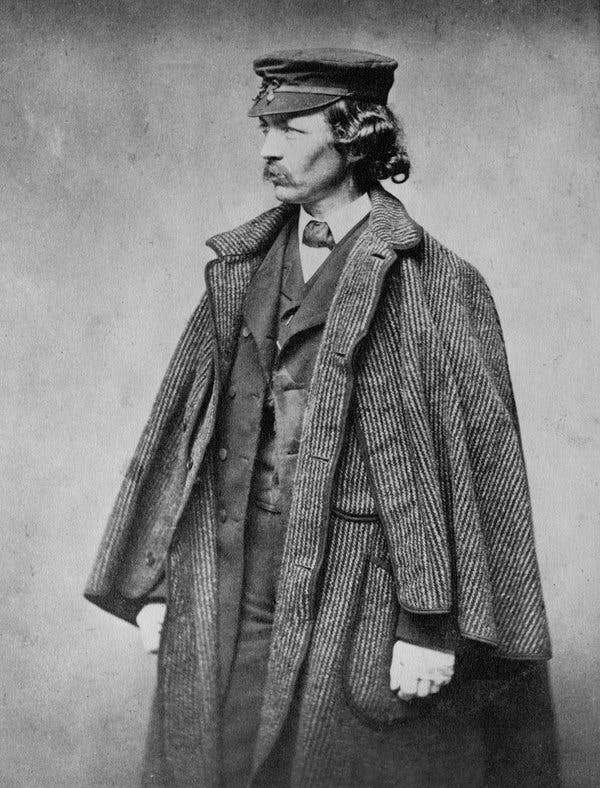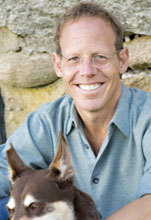Travels with Tony and Fred May 14, 2020

The following post includes affiliate links. More details here.
Before beginning our regularly scheduled post, we interrupt to remind you about book club. Join us at 7:30pm Central Time on Friday 26 June as we discuss Deanna Raybourn’s A Curious Beginning (A Veronica Speedwell Mystery Book 1). If you’re ready to sign up, you can do so here.

I have so many feelings about Spying on the South by Tony Horwitz and much of this is colored by my lense. First, I have always lived in Tennessee and grew up watching whatever my parents were watching, which included the North and South miniseries (John Jakes rather than Elizabeth Gaskell – which I have a very different love for), Walker, Texas Ranger, and Roots. I’m not unaware of the cruel history of my part of the world (and most parts have one, let’s be honest), nor was I surprised by that depiction in this text.
I’m getting ahead of myself, so let me backup. My expectation of Spying on the South was that the reader was going to be guided through Frederick L. Olmsted’s exploration of the pre-civil war South. What I did not expect was the author to follow in Fred’s footsteps and dig into the political realities of the rural South in 2016 – during the presidential primary. Whose fault is this? 100% my own. It’s in the marketing copy folks, so I’ll try not to hold this particular failed expectation against the author.
Now, back on track: I enjoyed the lengths Tony went to in pursuit of recreating Fred’s journey. His experiences traveling by river were especially interesting. Having been on the General Jackson Showboat a few times, I was familiar with the style of steamboat Tony traveled on from Memphis to New Orleans, however I had no idea that was a modern option for anything more than a short trip. The tow boat travel in Kentucky was very intriguing, growing up near the Cumberland River, there is regular barge traffic and I didn’t realize how little I knew about how that operates until reading this book.
I also enjoyed some familiar names in Tony’s exploration of Natchez, MS. During the late 1990s, my mother and I went on a trip to Natchez and Vicksburg exploring antebellum homes and civil war sites and visited some of the same places, including Magnolia Hall and Longwood. Our experiences were…less enlightened than Tony’s, and I remember having a discussion during some of the long hours in the car as to the missing pieces of the experiences of slaves and the tragedies during reconstruction. I was glad to hear of the improvements, but I still wonder, is it enough? I think back to two separate conversations with friends around not attending weddings at former plantations as a practice because they do not wish to have any part in celebrating the bondage used to create the wealth of that life. During one conversation I asked what is the right answer for those properties, during the other I just observed because social media can be a challenging place to have such conversations. I don’t have any answers on this, just questions, but I know we have not reached the point of “enough” yet. We may not know when we get there, but we can continue to take the next right step as individuals and as a society.
One shining light demonstrating what more can be is a group of African American medical students from Tulane posing in front of the slave quarter at Whitney Plantation, which Tony also visited. These medical students are working to become what they couldn’t see growing up, minority physicians, and to inspire and help others through their new organization The 15 White Coats. Their organization demonstrates what can be achieved, and I hope we can all ponder how we can be a part of improvements in our society as these future doctors show us quite plainly what happens when we dream and work hard, even when we have no example to follow.

from the New York Times
For the less appealing piece of Spying on the South: To me, a Nashville native, Tony didn’t explore much of my city. He saw Broadway, and judged that portion accurately. He spoke with local legend John Jay Hooker, and that feels on point for a lot of local and state politics. We have so much more to offer than honky tonks and politics, even in the 1850s, but I digress. I also did not enjoy much of Tony’s trek through Texas. It was repetitive of much of the attitudes and atmosphere of the rural South, with more varied food and more firearms. When he gets the idea to go on a days-long ride through the area around Sisterdale, I just wanted to ask sweet Tony what he thought was going to happen! I understand he was “roughing it” but for a rider with little experience to spend five days in the saddle seems like an incredibly sore idea! I’ve been in the saddle maybe three times ever, and I realize this. While I have sympathy for some of the woes he experiences on this misadventure, his saddlesorness is not among them.
German Texas was fascinating, as was the discussion of Eagle Pass and Piedras Negras. I am a huge fan of Shiner beer and have had the privilege of experiencing delicacies from the Czech Stop in West, Texas courtesy of a colleague returning from a visit to family in Waco, TX, but in true literary fashion, Tony drew me in and painted a gorgeous, lively picture of what he and Fred experienced in their travels, which brought new life to the stories I’d heard for years from my dear friend.
The bottom line, dear readers, is Spying on the South is a journey, well if we’re being literal, it’s about two journeys, but the reader’s journey, for me had it’s bumps and detours along the road, but the promise Tony kept delivering on time and time again was gorgeous, descriptive prose and the honest depictions of his experiences and perspectives on those travels. I didn’t love every portion and considered putting the book down multiple times, but I’m glad I didn’t. I knew Frederick L. Olmsted from The Last Castle by Denise Kiernan [included in Kindle Unlimited] and the Serafina Series by Robert Beatty (yes, it’s middle grade fiction, I know, and I love it), but this was a whole different perspective that I’m glad to add with the rest. I give it a solid 3 stars, mostly because I did have to push through parts of it, but I struggle with nonfiction, so take that into account. I won’t reread this, but I will be looking into Tony’s other titles.
~Nikki

from Goodreads
Per the usual, between myself and Nikki, I am drawn to the research end of the blog post, talking about the author and where the book fits in the context of his oeuvre, but this time I also wanted to dig a little deeper into the later work of Frederick Law Olmsted, our secondary protagonist, if you will allow. However, as this book is written in first person, I think it imperative to talk about Tony Horwitz first. Especially in the case of nonfiction, I think it’s important to know what else an author has embarked upon during their career, and Tony Horwitz had an exciting one. A graduate of both Brown University and the Columbia University Graduate School of Journalism, Tony was the 1995 Pulitzer Prize winner for National Reporting for his stories on conditions in low-wage America. He was also a renowned foreign correspondent for The New Yorker on conflicts in Africa, Europe, and the Middle East. An author of eight nonfiction books, three of which focused on the American Civil War, the first and most famous of those titles being Confederates in the Attic. He was married to Geraldine Brooks, Pulitzer Prize winning author in fiction for her 2005 release March. Regrettably, Tony died of a heart attack in May 2019 while on a walk in Washington D.C. He was on book tour for Spying on the South.

from Architecture.org
As for Olmsted, PBS came to the rescue. If you’re an Amazon prime member, you can watch the hour long 2014 documentary Frederick Law Olmsted: Designing the American Landscape to really get to know the (in)famous creator of landscape architecture. It gives an excellent overview of both his family life and the work he did: as the Yeoman journalist before the civil war, his work on Central Park and other public parks, and the formation of the first landscape architecture firm. I’m honestly glad I watched it in preparation for this blog post, as it gave me quite a bit more insight into Fred’s life AFTER his journeys to the South, and how his love of nature and the outdoors guided his entire career. I was especially intrigued to know that he headed the first groups to preserve natural wonders, beginning with Yosemite in California and including Niagara Falls. Interesting to think that the architect of Central Park is also to credit for our being able to experience the wonder of the falls without impediment of human buildings and industry. Having never been to New York City [yeah, I know…], I have to my knowledge only appreciated his work at Biltmore Estate and at Audubon Park in New Orleans, designed by his son Frederick Charles Olmsted for the firm after his retirement. Audubon Park is particularly poignant, as I can remember a classmate falling from one of the ancient oak trees and breaking his arm while we were on a picnic lunch when on a school field trip at the Zoo. I was probably in first grade.
Spying on the South is a little heartbreaking for me. I’m not talking about the writing style, because Tony recounts both his and Fred’s respective journeys with honesty and wit. He called himself the “red-shirted ‘expendable’ [from] Star Trek” when filling out his name under ‘spare’ on the tow boat’s crew list. I lol’d. I agree with Nikki that the journey in Texas was stale, but the Louisiana high point was filled with monster trucks, mud, and inherently racist slang. There were parts where I, too, wanted to close the book, but Tony kept pushing me along on his journey with Fred. I was shocked at how not shocked I was at the way Tony’s interviews with people and his research and experience of life in the South proves that we haven’t made the progress we should have in the 160-plus years since Yeoman Olmsted wrote his articles for the New York Daily Times. Once Tony made it to the Mexican border, as Fred had made it many years before, I was reminded of my recent read of American Dirt by Jeanine Cummins and the harrowing journey many immigrants make to arrive in el Norte, when in Fred’s time escaped slaves wanted to arrive south of the Rio Grande, into Mexico and freedom from slavery. I am ultimately glad I went on these travels with Tony and Fred, because it reminds me that we can all do better for each other, but we must also remember everyone’s inherent humanity, respecting each other with patience and grace. I will be picking up more of Tony’s titles later on, and I will probably end up doing a nonfiction deep dive into Olmsted’s work as a landscape architect, but that’s the art historian/preservationist in me.
~Ashley


